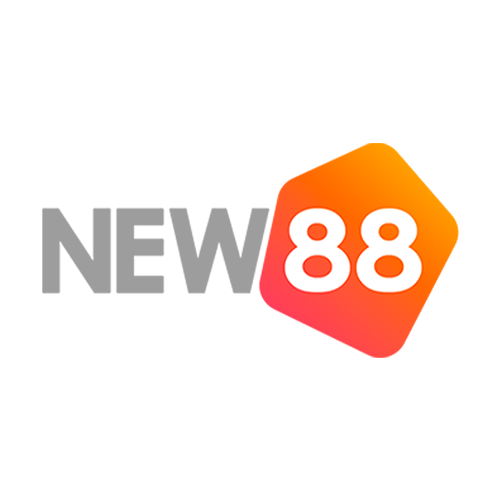
VSbet

M88

Fun88

VN88

FB88

BK8

W88

188BET

New88

i9BET

VSbet

M88

Fun88

VN88

FB88

BK8

W88

188BET

New88

i9BET
Không chỉ dừng lại ở việc theo dõi tỷ lệ, bạn còn có thể tìm thấy những phân tích, nhận định bóng đá từ các chuyên gia trước mỗi trận đấu. Bạn đang tìm kiếm một trang cá cược uy tín? KeoCopa chính là lựa chọn tuyệt vời cho bạn, nơi cung cấp đầy đủ thông tin về kèo bóng đá hôm nay 2025, giúp bạn đưa ra quyết định sáng suốt khi đặt cược.
Với tốc độ load cực nhanh và giao diện dễ sử dụng, bạn sẽ không phải chờ đợi lâu để xem tỷ lệ kèo. Hãy chắc chắn rằng bạn luôn cập nhật những thông tin mới nhất về tỷ lệ kèo bóng đá và đừng quên tham gia cá cược vào đội bóng mà bạn yêu thích nhé!
Đặc biệt, tại Keonhacai, chúng tôi luôn hỗ trợ các bạn với hơn 200 giải đấu lớn nhỏ trên toàn thế giới. Dù là giải đấu quốc tế hay các giải đấu trong nước, Keonhacai luôn sẵn sàng mang đến cho bạn tỷ lệ kèo chính xác nhất và phân tích sâu sắc về từng trận đấu.
Vừa bước chân vào thếgiớicácược bóngđátrực tuyến,đảm bảo anh em sẽthấy…choáng.Khôngđùađâu!Hàng loạt tỷlệkèo hiện lên lấp lánh nhưbuffet,kèo nào cũng hấp dẫn,kèo nào cũng nhưmời gọi.
Đừng lo,dướiđây làmấy loạikèo bóngđáphổbiếnmàdân chơi từnewbieđến kỳcựuđều từng“nếm qua”ít nhất một lần.Thửxem bạnđã“dính”cái nào chưa nhé😉
Gọi thân mật làkèo Handicap,loại kèo này giống nhưông trùm trong làng cáđộ.Nócómặt gần nhưtrong mọi trận cầu lớn nhỏ.Nghe thìcóvẻhơi học thuật nhưng thực ra dễhiểu lắm.
Đội mạnh chấpđội yếu–thếthôi.Nhưng cái hay là...chấp bao nhiêu?Vàbạn chọnđúng phe hay không mới làvấnđề!
👉Nóiđơn giản,kèo ChâuÁlàsân chơi cho ai thích"cân não"một chút.Chơi không chỉlàmay mắn màcòn làđọc trận,cảm trận.Cảm giácđoánđúng rồi chốt kèo,ăn trọn thì…đãgìđâu!
Nếu bạn làtân binh,đang còn mơhồgiữa một rừng tỷlệthìkèo 1x2–tức làkèo ChâuÂu–chính làlối vào nhẹnhàng nhất.
Không cần tính toán chấp trái gìcho mệtóc.Bạn chỉcần chọn 1 trong 3 cửa:Thắng–Hòa–Thua.Đội bạn tin sẽthắng thìđặt cược vào,đơn giảnđúng không?
Vídụnhé,cótrận cầu tối nay:Man City vs Aston Villa.Bạn nghĩMan City chắc chắn thắng?Bấm ngay cửa 1(thắng).Hoặc bạn nghi trận này hòa?Chọn X.Thua thìlàcửa 2.Cực kỳdễhiểu!
➡Đây làlựa chọn siêu hợp lýcho những ai mới nhập môn hoặc không thích phải tính nhiều.Nhanh gọn,rõràng,không vòng vo.
Thếgiớikèo nhàcái bóngđáthực sựrất rộng,mỗi loại lại có“gu”riêng.Đọc trận chuẩn,bắt kèo khéo thìchẳng khác nào nghệthuật.Vui làchính,thắng thìcàng tốt,quan trọng nhất vẫn làchơi tỉnh táo vàđúng giới hạn nha!
Đến với kèo cácược ChâuÂu,anh em chẳng cần phải suy nghĩquánhiềuđâu.Cứchọn một kết quảmình tin chắc vàchơi thôi.Cảm giác nhưlàthắngđược rồiấy!Màthật sựtỷlệthắng khi tham gia kèo này cũng khácao,nên chẳng cógìlạkhi ngày càng nhiều người chuyển qua cácược kiểu này.
Nhưng màtrước khi vào trận,nếu làdân mới,chắc chắn sẽcóvài thuật ngữmàbạn cần phải nắm vững.Đừng lo,mình sẽgiải thích cho bạn ngay nhé!
Cửa 1:Đây làkhi bạn cược chođội chủnhàthắng.Nếu cuối trận,đội chủnhàchiến thắng,bạn sẽthắng cược.Nhưng mànếu họthua hay hòa,bạn sẽmất tiền cượcđấy.Nói chung,chủnhàthắng làbạnăn cược,không cógìphải bàn!
Cửa X:Đây làcược cho tỷsốhòa.Nếu trậnđấu kết thúc với tỷsốhòa,bạn sẽnhậnđược tiền cược.Nhưng mànếu cómộtđội thắng,thìbạn sẽ...mất trắng.Kèo này chỉăn nếuđúng làhòa,không thểsai nhé!
Cửa 2:Cái này dành chođội khách.Bạn cược chođội khách thắng,mànếu cuối trận,họgiành chiến thắng,bạnăn cược.Còn nếuđội khách thua hoặc hòa thì...chia tay tiền cược luôn.Đơn giản vậy thôi!
Thếnhưng,ngoài kèo ChâuÂu,còn một thểloại kèo nữa cực kỳhấp dẫn màchắc chắn bạn không thểbỏqua–Tỷlệkèo Tài Xỉu.Đây làkèo màanh em cược thủmêtít luôn.
Kèo Tài Xỉu:Đúng nhưtên gọi,bạn sẽdựđoán tổng sốbàn thắng của cảhaiđội so với mức nhàcáiđưa ra.Nếu bạn chọnTài,tức làbạn nghĩtổng sốbàn thắng sẽcao hơn mức mànhàcáiđưa.Còn nếu bạn chọnXỉu,cónghĩa làbạn dựđoán trậnđấu sẽít bàn thắng hơn mức nhàcáiđưa ra.
Vídụnhé,nhàcái ra tỷlệtài xỉu là3 trái.Nếu trậnđấu kết thúc với tỷsốnhư2-1,3-0 hay 1-2,thìbạn sẽhòa tiền(tức làtiền cược của bạn sẽkhông mất màcũng không thắng).Nhưng mànếu kết quảtrậnđấu thấp hơn hoặc cao hơn 3 bàn thìbạn sẽthắng hoặc thua tùy theo cửa bạn chọn!
Kèo Malaysia:Đây làmột dạng kèo cực kỳphổbiếnởkhu vực ChâuÁ.Kèo nàyđược chia thành hai loại:kèo Malaysiaâm vàkèo Malaysia dương.Kèo nàyđược tính toán dựa trên các phân tích,sốliệu thống kêcực kỳchi tiết vềcácđội bóng.Chỉcần bạn chúýchút làcóthểđưa ra lựa chọn chính xác.Nếu may mắn vàphân tích tốt,tỷlệthắng sẽcao không tưởng!
Nhưng màđừng quên,dùbạn chọn kèo nàođi nữa,điều quan trọng nhất vẫn làbiết phân tích,đánh giáđúngđội hình,phongđộcủa haiđội trước mỗi trậnđấu.Chọn kèo phùhợp,bạn sẽcócơhội thắng rất lớnđấy.Đừngđểbịcuốn vào những kèo cược màmình không tựtin nhé!😉
Tham gia cược thểthao không chỉlàtròchơi màcòn lànghệthuật dựđoán.Cứthoải mái vàtựtin,chỉcần bạn hiểu rõluật chơi,nắm vững các kèo vàbiết phân tích chính xác,thắng lợi sẽđến với bạn.Chúc bạn may mắn vàchơi thật vui!
Chắc hẳn bạn cũngđãkhôngít lần bối rối khi nhìn vào tỷlệkèo bóngđácủa nhàcáiđúng không?Đừng lo,Keonhacai88.todaysẽgiúp bạn giải thích những tỷlệkèo bóngđáđơn giản nhất,đểbạn không còn phảiđắnđo nữa.
Đây làkiểu kèo cực kỳ“fair play”,tức làhaiđộiđềuđượcđánh giángang tài ngang sức,khôngđội nào chấpđội nào.Thếnên,kèo này rất dễhiểu.
Vídụ:Bạnđặt1.000.000vào kèo hôm nay với Man City vàChelsea:
Tương tựvới Chelsea,không cógìkhác biệt.
Kèo này thìnhẹnhàng hơn một chút,vìđội chủnhà(hoặcđội mạnh)sẽcómột chút lợi thế.Kèo này cókýhiệu là0.25,1/4,hoặc 0/0.5.
Vídụ:Bạnđặt1.000.000vào kèo Man City vàChelsea:
Kèo này làkhiđội cửa trên chấpđội cửa dưới một bàn thắng.Lúc này,đội cửa dưới cóthểgặp chút khókhăn nhưng vẫn cócơhội.
Vídụ:Bạnđặt1.000.000vào kèo Man City vàChelsea:
Đây làkèo khiđội cửa trên chấpđội cửa dưới0.75 trái.Khi này,đội cửa dưới sẽgặp khókhăn hơn nhiều.
Vídụ:Bạnđặt1.000.000vào kèo Man City vàChelsea:
Đây làkèo khiđội cửa trên chấpđội cửa dưới một bàn thắngđầyđủ.Rõràng làđội cửa dưới sẽcórấtít cơhội thắng,vìđội cửa trên quámạnh.
Vídụ:Bạnđặt1.000.000vào kèo Man City vàChelsea:
Chỉcần nắm rõcác loại kèo vàcách tính tiền,bạn sẽdễdàng hơn rất nhiều trong việcđưa ra quyếtđịnh cược.Hãy thửáp dụng ngay hôm nay vàđừng quên theo dõiKeonhacai88đểcónhững kèo hấp dẫn mỗi ngày nhé!
| Tên Công Ty | TỷLệCược | Loại Cược | Trạng Thái |
|---|---|---|---|
| N1Bet | 1.89 | Cược thểthao,Esports,casino trực tuyến | Hoạtđộng |
| Vave | 1.92 | Cược thểthao,crypto casino | Hoạtđộng |
| Sportingbet | 1.86 | Cược thểthao,casino | Hoạtđộng |
| Luckbox | 1.84 | Esports,cược thểthao | Hoạtđộng |
| ZetBet | 1.93 | Cược thểthao,casino trực tuyến,poker | Hoạtđộng |
🎉 Đội ngũ kỹ thuật xử lý vấn đề rất nhanh.
🎉 Phần thưởng tích luỹ lâu dài hấp dẫn.
🎉 Có mục hỏi đáp giải đáp nhanh.
🎉 Nhận thông báo bong bóng dự đoán trên app.
🎉 Có thể gửi ảnh khi yêu cầu hỗ trợ.
🎉 Thông tin khuyến mãi cập nhật rõ ràng.
🎉 Hỗ trợ đa kênh: chat, email, điện thoại.